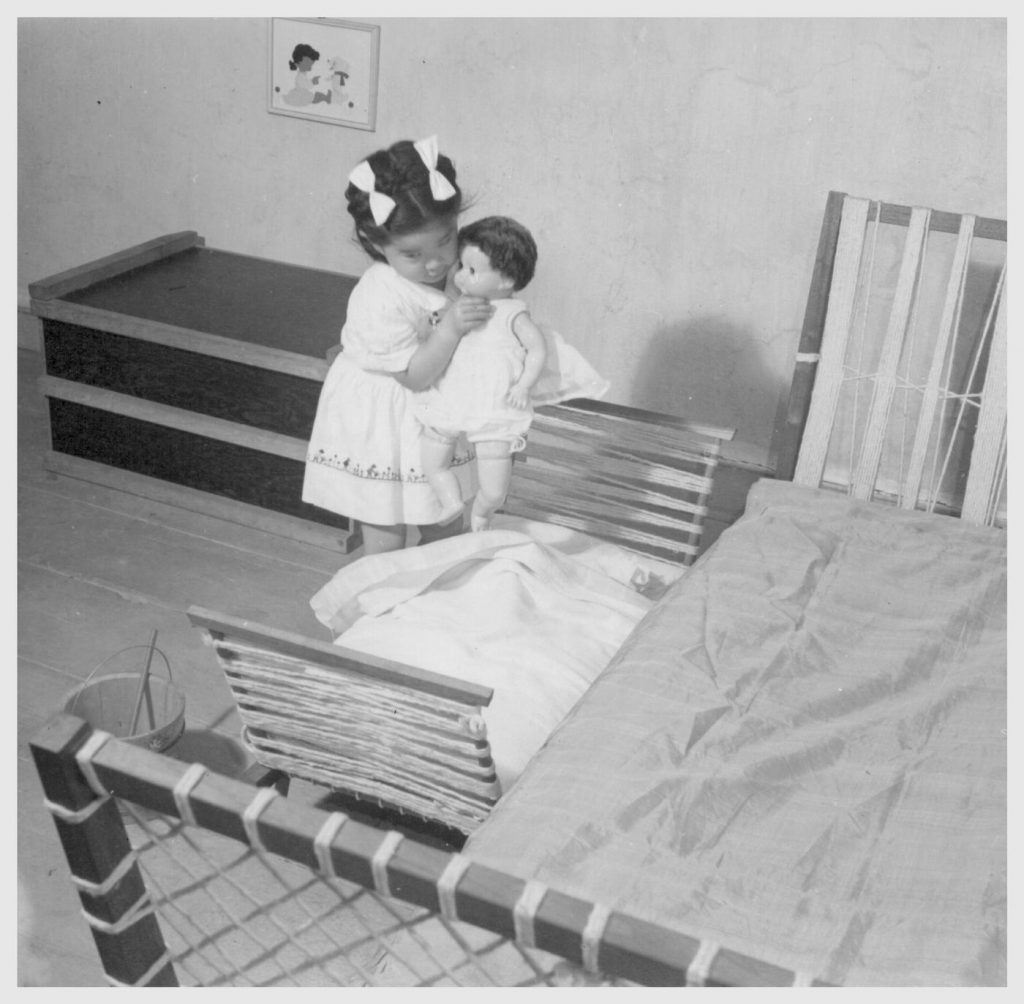You’d think that as a parent, I’d be less surprised by now at the constant discoveries of the extent of my own ignorance.
And yet.
Last night, while surfing through the archive of the War Relocation Authority’s nearly 7,000 photos of WWII Japanese American internment camps for “furniture,” [right, I know.] I was confused by the number of search results that included George Nakashima and his daughter Mira.

The internment camps only imprisoned Japanese Americans on the west coast; Nakashima, modernist woodworking master, lived in New Hope, Pennsylvania, so he should’ve been totally unaffected.
But then, these Nakashima photos, which are all from 1945, have captions like, “The Nakashimas, formerly of Seattle and Minidoka.”
As if anyone is from Minidoka.
And it’s only then that I looked at Nakashima’s bio, and sure enough, the architect, his wife Marion, and his newborn daughter were expelled from Seattle and detained at Minidoka, Idaho in the Spring of 1942. It was only through the protracted petitions of Antonin Raymond, an architect and former employer, that the Nakashimas were able to leave the camp for Raymond’s farm in New Hope.

The picture above, by WRA photographer Francis Stewart, shows George Nakashima at Minidoka in the Fall of 1942, “Constructing and decorating model apartment to show possibilities using scrap materials.” Which, just. Wallpaper made from bookpages and blueprints and a proto-Conoid table made from prison scraps. This room should be in the Smithsonian.
The irony, if that’s the right word, is that it was at Minidoka that Nakashima met Gentaro Hikogawa, an issei hotel manager three years older than he, who’d immigrated from Shikoku to Tacoma. Hikogawa was also a master carpenter, who taught Nakashima Japanese joinery and rural handtool techniques that formed the foundation for Nakashima’s philosophy and later innovations.

Speaking of which, here are two photos of 3-yo Mira Nakashima posing next to two beds her father made, one for her, and one for her doll, in her bedroom in New Hope.

War Relocation Authority Photographs of Japanese-American Evacuation and Resettlement, 1942-1945 [oac.cdlib.org]
[Originally published on Daddy Types on September 3, 2012, as George Nakashima and His Family Moved To New Hope in 1943]
